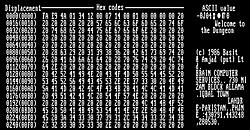This article's factual accuracy is disputed .(January 2025) |
This article lists inventions and discoveries made by scientists with Pakistani nationality within Pakistan and outside the country, post the independence of Pakistan in 1947.
This article's factual accuracy is disputed .(January 2025) |
This article lists inventions and discoveries made by scientists with Pakistani nationality within Pakistan and outside the country, post the independence of Pakistan in 1947.



{{cite journal}}: CS1 maint: multiple names: authors list (link){{cite web}}: CS1 maint: numeric names: authors list (link)